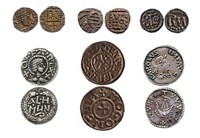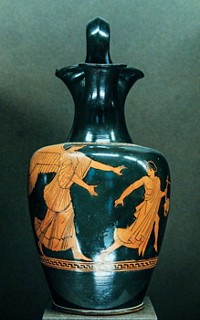Advertisement
Grab your lab coat. Let's get started
Welcome!
Welcome!
Create an account below to get 6 C&EN articles per month, receive newsletters and more - all free.
It seems this is your first time logging in online. Please enter the following information to continue.
As an ACS member you automatically get access to this site. All we need is few more details to create your reading experience.
Not you? Sign in with a different account.
Not you? Sign in with a different account.
ERROR 1
ERROR 1
ERROR 2
ERROR 2
ERROR 2
ERROR 2
ERROR 2
Password and Confirm password must match.
If you have an ACS member number, please enter it here so we can link this account to your membership. (optional)
ERROR 2
ACS values your privacy. By submitting your information, you are gaining access to C&EN and subscribing to our weekly newsletter. We use the information you provide to make your reading experience better, and we will never sell your data to third party members.
Analytical Chemistry
Element Detection On The Road
Cultural Heritage: Scientists build a handheld tool for field studies of the composition of artifacts
by Sarah Everts
May 21, 2012

A new portable device can be used to measure the elemental composition of art and artifacts, using less than a nanogram of any object (Anal. Chem., DOI: 10.1021/ac3008626). The team tested the instrument on a statue from one of China’s cultural masterpieces, the Terra-Cotta Army, in Xi’an.
“There are a lot of situations where you can’t move an artifact to a lab” for analysis with specialized instruments, says Detlef Günther at the Swiss Federal Institute of Technology, in Zurich. The object may be too fragile, not permitted across state boundaries, or physically rooted at an outdoor site, such as a cave wall, he explains.
The workhorse technique currently used to study the composition of artifacts outside the lab is X-ray fluorescence spectrometry (XRF). The noninvasive method exposes an artifact to X-rays and then determines its elemental composition based on the resulting fluorescence.
With his colleagues Reto Glaus and Joachim Koch, Günther developed a new tool that makes use of another commonly used analytical technique called laser ablation inductively coupled plasma mass spectrometry (LA-ICPMS). The handheld device uses a laser to vaporize a small sample. The material then goes to a mass spectrometer for analysis.

Günther says the handheld LA-ICPMS could complement XRF, because it can do things that XRF cannot. For instance, it can detect elements lighter than silicon, measure the amount of trace elements, and detect ratios of elements’ isotopes.
Trace elements and isotope ratios can help conservation scientists pinpoint the geographical origins of artifacts. For example, Günther says, other researchers hope LA-ICPMS could pinpoint the origin of ancient synthetic blue and purple dyes in Chinese artifacts or the origin of gold used in ancient Peruvian Inca pieces.
As a proof-of-principle test of the portable instrument, Günther and his team analyzed the arm of one statue in the Terra-Cotta Army. They showed that the technique could measure a range of elements in the artifact, including aluminum, zirconium and magnesium, which other techniques such as X-ray-based ones missed.
However, the device’s main downside is that LA-ICPMS is slightly invasive, because it requires a small sample from a cultural heritage object. “The sample is just a tenth or a hundredth of a nanogram,” Günther says, “and a single sample can be used in two experiments, one for isotope analysis and the second to evaluate trace elements.”
Still, “some curators and archaeologists are just against sampling, period, no matter how small and invisible to the naked eye the sample spot is,” says Francesca Casadio, a senior conservation scientist at the Art Institute of Chicago.
“Archaeological and arts objects are extremely heterogeneous,” she adds. Even if a conservation scientist got permission to sample an artifact, it is only likely to be granted in one or two spots, which are unlikely to be representative of the whole object, she says. She envisions that researchers might rely on XRF for an initial scan to pinpoint where samples for LA-ICPMS might be most informative.
“It is a wonderful and imaginative development,” Casadio says, but she looks forward to seeing the handheld device prove itself in the field.





Join the conversation
Contact the reporter
Submit a Letter to the Editor for publication
Engage with us on Twitter